Themed collection Soft Matter Most Popular 2020

Soft matter science and the COVID-19 pandemic
Much of the science underpinning the global response to the COVID-19 pandemic lies in the soft matter domain.

Soft Matter, 2020,16, 8310-8324
https://doi.org/10.1039/D0SM01223H
An engineer's introduction to mechanophores
Mechanophores are force-responsive molecules that have the potential to serve as stress sensors in various material systems. This review discusses recent scientific advances and critical challenges facing engineers regarding implementation of mechanophores in polymeric materials.
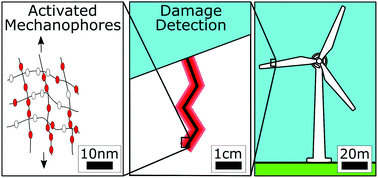
Soft Matter, 2020,16, 6230-6252
https://doi.org/10.1039/D0SM00465K
Irreversible adsorption of polymer melts and nanoconfinement effects
This review invites us to reconsider the way we look at interfaces: from a mere expression of intermolecular potentials to versatile processing parameters.

Soft Matter, 2020,16, 5348-5365
https://doi.org/10.1039/D0SM00361A
A practical guide to active colloids: choosing synthetic model systems for soft matter physics research
This review article provides practical, experimentally relevant details on six common types of active colloids useful for soft matter research.
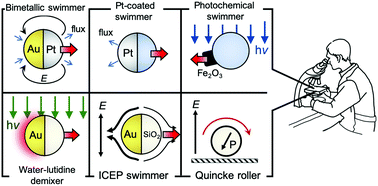
Soft Matter, 2020,16, 3846-3868
https://doi.org/10.1039/D0SM00222D
Recent progress in the science of complex coacervation
We review recent progress in the science of polymeric complex coacervation.
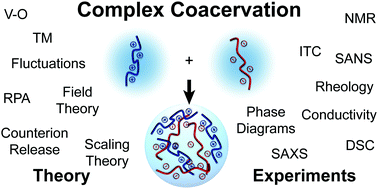
Soft Matter, 2020,16, 2885-2914
https://doi.org/10.1039/D0SM00001A
A review on recent advances in polymer and peptide hydrogels
Herein, very recent advances in polymer, peptide, and hybrid hydrogels for uses in photovoltaics, supercapacitor, organic electronics, drug delivery, tissue engineering, biosensing, cell culture, and different optoelectronic materials are discussed.

Soft Matter, 2020,16, 1404-1454
https://doi.org/10.1039/C9SM02127B
Fabrication and application of complex microcapsules: a review
The development of new functional materials requires cutting-edge technologies for incorporating different functional materials without reducing their functionality.
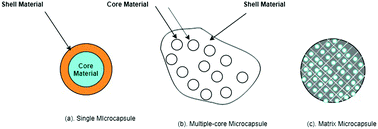
Soft Matter, 2020,16, 570-590
https://doi.org/10.1039/C9SM01634A
Advances in our understanding of the structure and functionality of edible fats and fat mimetics
Structural length scales within a fat crystal network, from TAG molecules packing into lamellae, crystalline nanoplatelets and fractal aggregates of nanoplatelets.
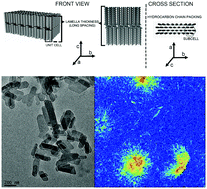
Soft Matter, 2020,16, 289-306
https://doi.org/10.1039/C9SM01704F
Measuring viscoelasticity of soft biological samples using atomic force microscopy
The latest achievements in the viscoelastic characterization of biological samples with AFM are reviewed from both methodological and theoretical sides.
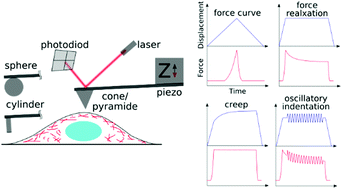
Soft Matter, 2020,16, 64-81
https://doi.org/10.1039/C9SM01020C
Microrheological characterization of covalent adaptable hydrogel degradation in response to temporal pH changes that mimic the gastrointestinal tract
This work provides a new experimental platform to simultaneously mimic the pH environment in the GI tract and characterize the degradation of a covalent adaptable hydrogel to determine viability of this material as an oral delivery vehicle.
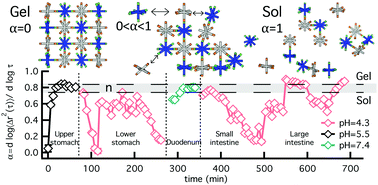
Soft Matter, 2020,16, 6253-6258
https://doi.org/10.1039/D0SM00630K
Apparent phototaxis enabled by Brownian motion
To improve the understanding of phototaxis, we investigate the origin of our photocatalytic particles’ peculiar scotophobicity (fear of darkness).
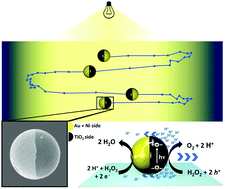
Soft Matter, 2020,16, 10585-10590
https://doi.org/10.1039/D0SM01603A
Rheological investigation of collagen, fibrinogen, and thrombin solutions for drop-on-demand 3D bioprinting
Collagen, fibrinogen, and thrombin proteins in aqueous buffer solutions are widely used as precursors of natural biopolymers in three-dimensional (3D) bioprinting applications.
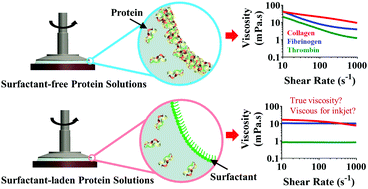
Soft Matter, 2020,16, 10506-10517
https://doi.org/10.1039/D0SM01455A
Catalytically propelled 3D printed colloidal microswimmers
3D microprinting allows the preparation of colloidal microswimmers with unlimited shape complexity furthering the understanding of out-of-equilibrium phenomenon.
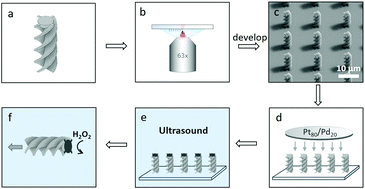
Soft Matter, 2020,16, 10463-10469
https://doi.org/10.1039/D0SM01320J
Holographic immunoassays: direct detection of antibodies binding to colloidal spheres
The size of a probe bead reported by holographic particle characterization depends on the proportion of the surface area covered by bound target molecules and so can be used as an assay for molecular binding.
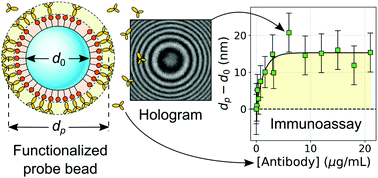
Soft Matter, 2020,16, 10180-10186
https://doi.org/10.1039/D0SM01351J
First-passage fingerprints of water diffusion near glutamine surfaces
First-passage time statistics of water molecules carries information about their interaction with proteins. This information allows reconstruction of water’s space-dependent mobility near protein surfaces.
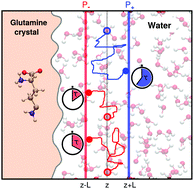
Soft Matter, 2020,16, 9202-9216
https://doi.org/10.1039/D0SM00541J
Network topologies dictate electromechanical coupling in liquid metal–elastomer composites
Conductive traces of elastomer embedded with liquid metal droplets exhibit little change in electrical resistance when stretched to large strains. Computational modeling is performed to better understand this remarkable piezoresistive property.
Soft Matter, 2020,16, 8818-8825
https://doi.org/10.1039/D0SM01094D
Escape of a passive particle from an activity-induced energy landscape: emergence of slow and fast effective diffusion
Activity can also slow down the escape dynamics in dense environment by incorporating ruggedness in the energy landscape, as revealed in our analytical calculations.

Soft Matter, 2020,16, 7103-7115
https://doi.org/10.1039/D0SM00711K
Elasto-morphology of P3HT:PCBM bulk heterojunction organic solar cells
The effect of solution processing conditions on the elasto-morphology of a bulk heterojunction layer reveals a trade-off between thermo-mechanical stability and performance in organic solar cells.

Soft Matter, 2020,16, 6743-6751
https://doi.org/10.1039/D0SM00849D
Field driven evaporation kinetics of a sessile ferrofluid droplet on a soft substrate
We experimentally investigate the evaporation kinetics of a sessile ferrofluid droplet placed on a soft substrate in the presence of a time-dependent magnetic field.
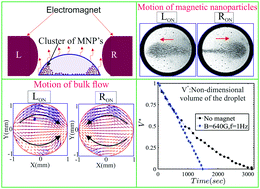
Soft Matter, 2020,16, 6619-6632
https://doi.org/10.1039/D0SM00345J
An insight into the role of riboflavin ligand in the self-assembly of poly(lactic-co-glycolic acid)-based nanoparticles – a molecular simulation and experimental approach
Nanoparticles (NPs) used for targeted delivery purposes are rapidly gaining importance in diagnostic and therapeutic fields.
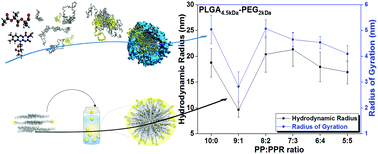
Soft Matter, 2020,16, 5250-5260
https://doi.org/10.1039/D0SM00203H
Rationally designed surface microstructural features for enhanced droplet jumping and anti-frosting performance
Hierarchically structured aluminum superhydrophobic surfaces are prepared, and it is demonstrated that appropriate microstructural size scale is required to achieve improved droplet jumping and anti-frosting performance of the surfaces.
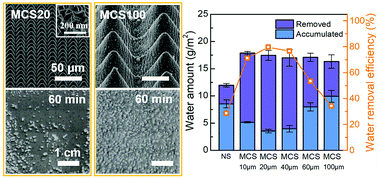
Soft Matter, 2020,16, 4462-4476
https://doi.org/10.1039/D0SM00436G
Fabrication of unconventional inertial microfluidic channels using wax 3D printing
A novel workflow for the fabrication of inertial microfluidic devices based on the wax 3D printing method.
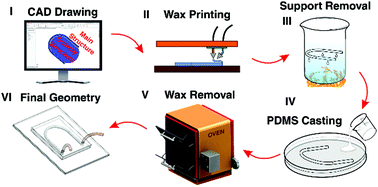
Soft Matter, 2020,16, 2448-2459
https://doi.org/10.1039/C9SM02067E
Thermodynamic control over energy dissipation modes in dual-network hydrogels based on metal–ligand coordination
Multiple energy dissipating modes are introduced into a model network hydrogel by metallo-supramolecular bonds and regulated by their association thermodynamics.
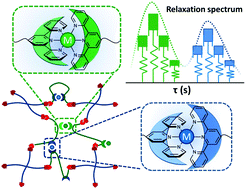
Soft Matter, 2020,16, 2332-2341
https://doi.org/10.1039/C9SM02149C
Adaptable Eu-containing polymeric films with dynamic control of mechanical properties in response to moisture
Moisture that competes with dipicolylamine to bind Eu dynamically controls the mechanical and optical properties of polymer films, as well as their self-healing efficiency.
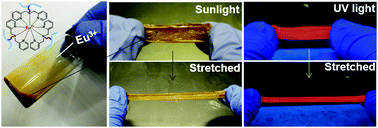
Soft Matter, 2020,16, 2276-2284
https://doi.org/10.1039/C9SM02440A
Seawater-enhanced tough agar/poly(N-isopropylacrylamide)/clay hydrogel for anti-adhesion and oil/water separation
Seawater-enhanced tough APNC gel used for anti-adhesion and oil/water separation.
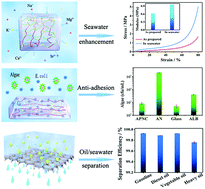
Soft Matter, 2020,16, 2199-2207
https://doi.org/10.1039/C9SM02524C
Durability of submerged hydrophobic surfaces
Study of change in surface morphology and wettability of biomimetic hydrophobic surfaces submerged in acidic, basic and neutral media for different durations over a prolonged period of time.
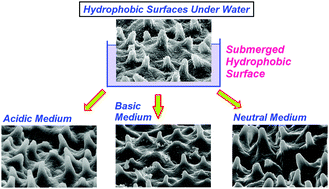
Soft Matter, 2020,16, 1692-1701
https://doi.org/10.1039/C9SM01942A
Cross-correlated humidity-dependent structural evolution of Nafion thin films confined on a platinum substrate
We cross-correlate the hydration-dependent structure and properties – microscopic and macroscopic – of a thin Nafion ionomer film on an electrochemically pertinent Pt substrate.
Soft Matter, 2020,16, 1190-1200
https://doi.org/10.1039/C9SM01731C
Preparation of hydrophobic epoxy–polydimethylsiloxane–graphene oxide nanocomposite coatings for antifouling application
Epoxy–polydimethylsiloxane–graphene oxide (EPG) nanocomposite coatings were synthesized by loading different wt% of graphene oxide nanosheets (GNs) into an epoxy–hydroxy-terminated-polydimethylsiloxane (EP–hPD) matrix through in situ polymerization.
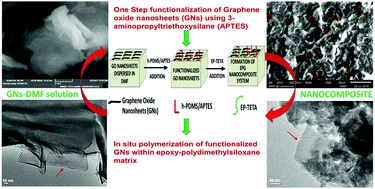
Soft Matter, 2020,16, 1211-1226
https://doi.org/10.1039/C9SM01952A
Conformational dynamics and phase behavior of lipid vesicles in a precisely controlled extensional flow
Direct observation of vesicle conformational dynamics in extensional flow and precise characterization of flow phase diagrams using a Stokes trap.
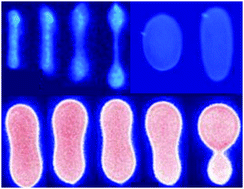
Soft Matter, 2020,16, 337-347
https://doi.org/10.1039/C9SM02048A
Fabrication of novel MXene (Ti3C2)/polyacrylamide nanocomposite hydrogels with enhanced mechanical and drug release properties
Novel Ti3C2/polyacrylamide nanocomposite hydrogels with excellent mechanical and drug release performances were fabricated via in situ polymerization, employing ultralow content Ti3C2 nanosheets as crosslinkers instead of organic crosslinkers.

Soft Matter, 2020,16, 162-169
https://doi.org/10.1039/C9SM01985E
About this collection
This online collection features some of the most cited, most downloaded and most shared articles published in Soft Matter during 2020. Thank you to our authors, reviewers and readers for your ongoing support.